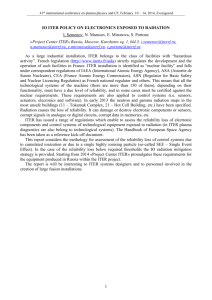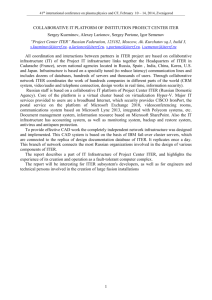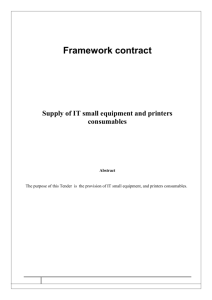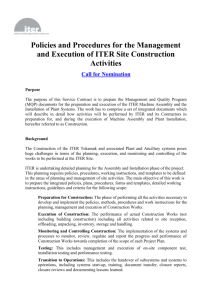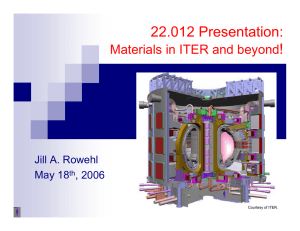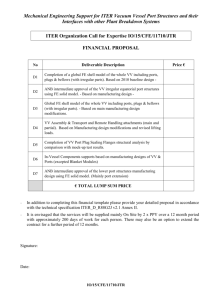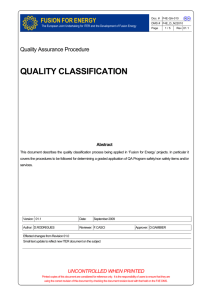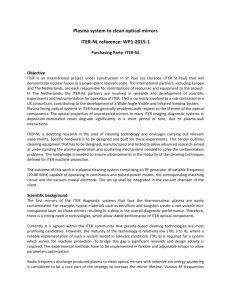a model of multi-pass absorption of external ec radiation at initial
advertisement
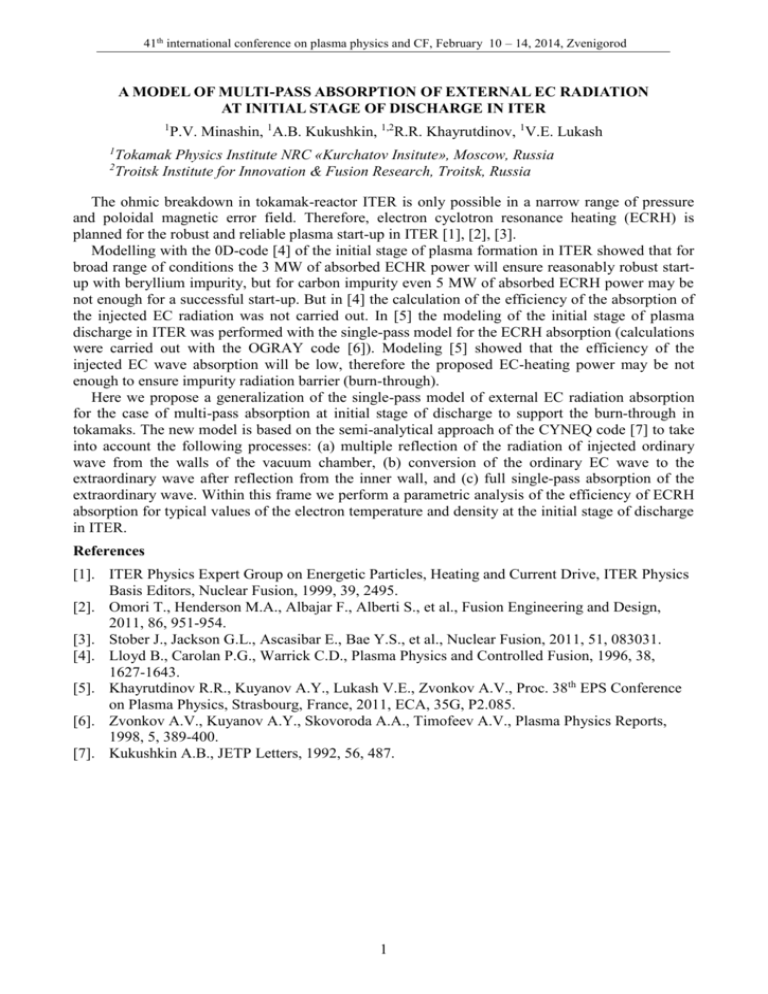
41th international conference on plasma physics and CF, February 10 – 14, 2014, Zvenigorod A MODEL OF MULTI-PASS ABSORPTION OF EXTERNAL EC RADIATION AT INITIAL STAGE OF DISCHARGE IN ITER 1 1 2 P.V. Minashin, 1A.B. Kukushkin, 1,2R.R. Khayrutdinov, 1V.E. Lukash Tokamak Physics Institute NRC «Kurchatov Insitute», Moscow, Russia Troitsk Institute for Innovation & Fusion Research, Troitsk, Russia The ohmic breakdown in tokamak-reactor ITER is only possible in a narrow range of pressure and poloidal magnetic error field. Therefore, electron cyclotron resonance heating (ECRH) is planned for the robust and reliable plasma start-up in ITER [1], [2], [3]. Modelling with the 0D-code [4] of the initial stage of plasma formation in ITER showed that for broad range of conditions the 3 MW of absorbed ECHR power will ensure reasonably robust startup with beryllium impurity, but for carbon impurity even 5 MW of absorbed ECRH power may be not enough for a successful start-up. But in [4] the calculation of the efficiency of the absorption of the injected EC radiation was not carried out. In [5] the modeling of the initial stage of plasma discharge in ITER was performed with the single-pass model for the ECRH absorption (calculations were carried out with the OGRAY code [6]). Modeling [5] showed that the efficiency of the injected EC wave absorption will be low, therefore the proposed EC-heating power may be not enough to ensure impurity radiation barrier (burn-through). Here we propose a generalization of the single-pass model of external EC radiation absorption for the case of multi-pass absorption at initial stage of discharge to support the burn-through in tokamaks. The new model is based on the semi-analytical approach of the CYNEQ code [7] to take into account the following processes: (a) multiple reflection of the radiation of injected ordinary wave from the walls of the vacuum chamber, (b) conversion of the ordinary EC wave to the extraordinary wave after reflection from the inner wall, and (c) full single-pass absorption of the extraordinary wave. Within this frame we perform a parametric analysis of the efficiency of ECRH absorption for typical values of the electron temperature and density at the initial stage of discharge in ITER. References [1]. ITER Physics Expert Group on Energetic Particles, Heating and Current Drive, ITER Physics Basis Editors, Nuclear Fusion, 1999, 39, 2495. [2]. Omori T., Henderson M.A., Albajar F., Alberti S., et al., Fusion Engineering and Design, 2011, 86, 951-954. [3]. Stober J., Jackson G.L., Ascasibar E., Bae Y.S., et al., Nuclear Fusion, 2011, 51, 083031. [4]. Lloyd B., Carolan P.G., Warrick C.D., Plasma Physics and Controlled Fusion, 1996, 38, 1627-1643. [5]. Khayrutdinov R.R., Kuyanov A.Y., Lukash V.E., Zvonkov A.V., Proc. 38th EPS Conference on Plasma Physics, Strasbourg, France, 2011, ECA, 35G, P2.085. [6]. Zvonkov A.V., Kuyanov A.Y., Skovoroda A.A., Timofeev A.V., Plasma Physics Reports, 1998, 5, 389-400. [7]. Kukushkin A.B., JETP Letters, 1992, 56, 487. 1
